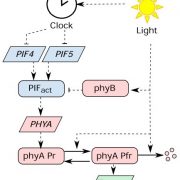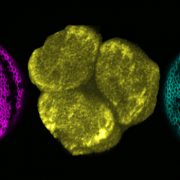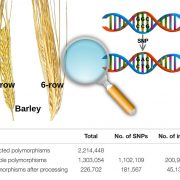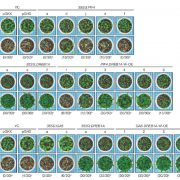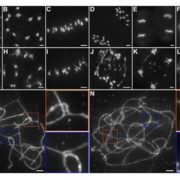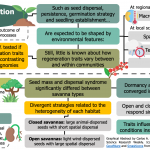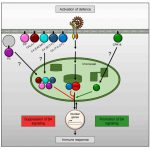Root angle modifications by the DRO1 homolog improve rice yields in saline paddy fields (PNAS)
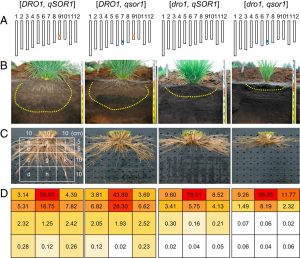 The spatial configuration of roots is a complex and critical trait for productivity that is impacted by abiotic stresses such as drought, waterlogging, and salinity. Soil salinity is expected to affect 50% of agricultural land worldwide by 2050. This research describes that the loss of function of qSOR1 (quantitative trait locus for SOIL SURFACE ROOTING 1) “qsor1-NIL” shows a shallow root growth angle (RGA) developing more on the soil surface. However, this QTL is a homolog of DRO1 (DEEPER ROOTING 1) which is a known regulator of RGA for deeper rooting. While a deep root system is beneficial to enhance drought avoidance, a shallow phenotype can facilitate the acquisition of phosphorus and facilitate growth in waterlogged areas. This response is negatively regulated via auxin signaling as qSOR1 expression declines rapidly after exogenous hormone application. Although DRO1 and qSOR1 show differential control of RGA, the C-terminal region among homologs is well conserved and determinant for proper function. Gravitropism sensing occurs in the root tips, and DRO1 is expressed in the whole root meristems except for the columella cells, whereas qSOR1 is specifically expressed in the columella cells. Saline conditions weaken qsor1-NIL rice root gravitropic responses similarly to those of wild-type roots when germinated in vitro. In contrast, in a field trial, qsor1-NIL rice yielded 15% more than the control in saline soil. Although the molecular mechanisms for the acquired increased yield need to be further investigated, this research highlights the potential of DRO1 homologs to improve salinity tolerance. (Summary by Camila Ribeiro @camicribeiro86) PNAS 10.1073/pnas.2005911117
The spatial configuration of roots is a complex and critical trait for productivity that is impacted by abiotic stresses such as drought, waterlogging, and salinity. Soil salinity is expected to affect 50% of agricultural land worldwide by 2050. This research describes that the loss of function of qSOR1 (quantitative trait locus for SOIL SURFACE ROOTING 1) “qsor1-NIL” shows a shallow root growth angle (RGA) developing more on the soil surface. However, this QTL is a homolog of DRO1 (DEEPER ROOTING 1) which is a known regulator of RGA for deeper rooting. While a deep root system is beneficial to enhance drought avoidance, a shallow phenotype can facilitate the acquisition of phosphorus and facilitate growth in waterlogged areas. This response is negatively regulated via auxin signaling as qSOR1 expression declines rapidly after exogenous hormone application. Although DRO1 and qSOR1 show differential control of RGA, the C-terminal region among homologs is well conserved and determinant for proper function. Gravitropism sensing occurs in the root tips, and DRO1 is expressed in the whole root meristems except for the columella cells, whereas qSOR1 is specifically expressed in the columella cells. Saline conditions weaken qsor1-NIL rice root gravitropic responses similarly to those of wild-type roots when germinated in vitro. In contrast, in a field trial, qsor1-NIL rice yielded 15% more than the control in saline soil. Although the molecular mechanisms for the acquired increased yield need to be further investigated, this research highlights the potential of DRO1 homologs to improve salinity tolerance. (Summary by Camila Ribeiro @camicribeiro86) PNAS 10.1073/pnas.2005911117



